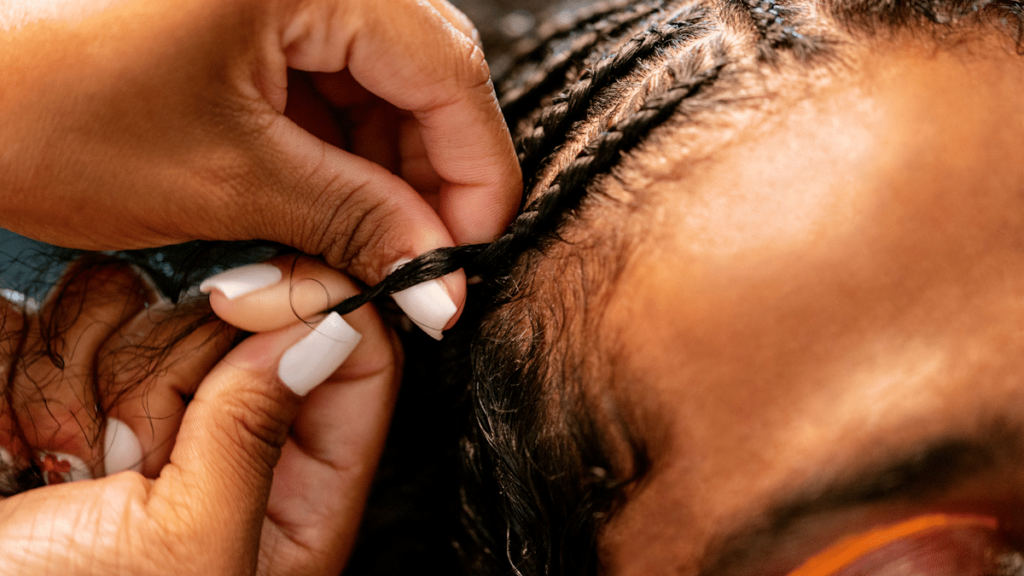[ad_1]
How have Japanese schools’ strict regulations on hair impacted students? The Tokyo Bar Association recently surveyed students with mixed or foreign racial backgrounds to find out. The results show how the regulations impact a disproportionate number of students.
Rules are rules? Or discrimination?
In a country where bringing Valentine’s Day chocolates or furikake rice toppings are arguably rude and ban-worthy, the list of forbidden behavior is long, to say the least.
Imposing rules on behavior is one thing. Regulating natural appearance to Japanese racial standards is another.
The latter is what Japan’s draconian hair rules tend to do, strictly punishing students who deviate from the standard. One example: a Japanese model who took high school classes in isolation for dying her hair purple, starkly different from black Japanese hair.
But an increasing number of students have non-black hair, not as a fashion choice, but because of their roots.
One in 24 babies born in Japan in 2021 had either one or both parents with a foreign nationality, according to the Ministry of Health, Labor, and Welfare. Without radical change to Japanese school culture, these children will enter school systems in which students are already facing discrimination for having curly and light-colored hair.
Advertisements
That’s why the Tokyo Bar Association surveyed students with foreign roots in elementary, junior, or high school in Japan. The Bar also asked their legal guardians about their experiences involving hair-related issues.
The results came out in January this year – the first study of its kind in Japan.
Curly hair is not allowed
In each of the survey’s age groups, less than 3% of respondents were attending international schools. These schools have rules similar to schools in the U.S. or U.K. and don’t often enforce strict rules on hair. That left approximately 97% of students in Japanese schools.
Between May and June last year, 129 participants, 81.4% female, responded to a questionnaire. 69% identified as having very curly hair. 70% wore their natural curls. The remainder reported undergoing shukumōkyosei (縮毛矯正) treatments, straight perm treatments, and/or dying their hair black.
Shukumōkyosei literally means “to shrink and correct hair”. It’s a permanent straightening treatment that removes 70 to 90% of curls, volume, and frizz by chemically restructuring hair bonds.
Those who altered their hair were most motivated by feelings such as wanting to “not stand out.”
Schools want proof that curls are natural

In written responses, some said their decision to change hairstyles was to “avoid having to submit jigeshōmeisho (地毛証明書),” or “real hair certificates.” In 2021, 44.6% of Tokyo’s 177 full-time high schools required these certificates from students whose hair was not the Japanese standard of straight and black.
“School rules ban changing one’s hairstyle, reasoning that it is inappropriate to stand out,” Lawyer Yōichi Arizono told Mainichi Shimbun reporters.
Nearly 10% of schools ban braids. 23% ban French braids.
An anonymous half-Black American student told Toyo Keizai that her school gave her special permission to attend school once a week. She can wear up to four braids after her “wash day” while she waits 24 hours for her hair to dry.
22% of schools obligated female students to wear ponytails, which don’t work well with curly hair.
Emiko Najima, a hairstylist specializing in Black hair, says the regulations can cause long-term damage. When people with strong curls force their hair into a tight tie, over time, they may suffer from traction alopecia, a form of hair loss.
The right to education tangled in hair
Arizono has witnessed schools pressuring students to perm or dye their hair, which he says is “forced assimilation and discrimination.”
The survey’s respondents shared anecdotes that resonate with Arizono’s critique.
“When I go to school with braids, I am called out and told off for styling myself,” one person said.
On the other hand, some respondents reported support from schools, such as receiving permission to use hair gel for Black hair.
When asked what schools should do, one respondent said, “I want to be able to go to school regardless of whether I have an afro or cornrows, black or brown hair.”
“No point in being here”
Last February, a high school in Himeji City, Hyōgo Prefecture segregated a half-Black and half-Japanese student to a different floor from other students for attending his graduation ceremony wearing cornrows.

The 18-year-old graduate and his parents left during the ceremony, finding “no point in being there,” Mainichi Shimbun reports.
In the following days, the student returned to the school to receive his diploma. A teacher told him to “leave the school premises,” nodding at his cornrows.
In response, the civilian group Japan For Black Lives petitioned the Ministry of Education, demanding that it scrap all discriminatory school rules. On September 7th last year, the group submitted approximately 37,000 signatures.
Sources
「黒髪・直毛」が前提の校則 外国人ルーツの子の人格形成に影響. 毎日新聞
Japanese Hair Straightening: The Pros, Cons, Cost, and More. COSMOPOLITAN
「外国にルーツを持つ子供たちの学校における髪の毛にまつわる経験についてのアンケート」調査報告書. 東京弁護士会
「黒人の髪型」が校則違反になる学校の超理不尽. 東洋経済
黒人伝統の髪型は校則違反? 隔離された卒業生「返事もできず」. 毎日新聞
髪型や髪質で差別しないで 文科省に3万人超の署名提出. KYODO
[ad_2]
Source link



